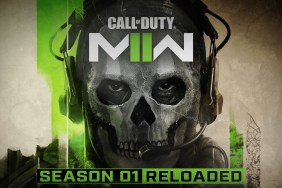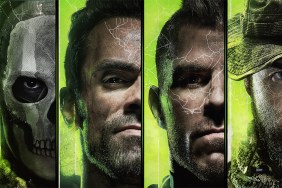Tomorrow never dies.
Splinter Cell: Pandora Tomorrow was one of the most important
titles ever released for the
Xbox. It managed to capture the stealthy essence of the original Splinter
Cell while adorning itself in some gorgeous visuals, topping it off with its
own unique brand of addictive online play.
Unfortunately, very little of that made it into the Gamecube version. Instead,
Gamecube owners are left with a solid single-player campaign, but not much
else, turning what was once a fantastic game into merely a decent one.
The campaign begins with the violent assault of a U.S. Embassy in East Timor,
a small nation in the Indonesian island chain, and takes you all over the world
searching for the meaning behind the words ‘Pandora Tomorrow,’ as well as their
author, Sadono. In a storyline that is eerily applicable to current events,
one wonders if between the lines in the news can be discerned the secret wars
of real Sam Fischers. Regardless of its ties to reality, Pandora
Tomorrow is
plenty believable.
Most of Pandora
Tomorrow is unchanged from the Xbox version in terms of gameplay. Sam can creep,
walk, run, roll, jump, climb, hang, SWAT turn (a fancy move that takes him
stealthily past doorways), creep along walls, shoot his gun standing, crouching,
hanging, around corners, upside down and over enemy shoulders, as well as carry
bodies, snipe, whistle(!), elbow slam, pick-locks, disarm bombs and, I think,
bake a cake.
He’s also got all the nifty gadgets from before. Using his optic cable or
sticky cam (which can enter both heat and night vision modes), he can case
an area for passive defenses such as motion detectors and cameras as well as
check out the lighting/guard situation. The only new gadget in the single-player
campaign is the camera jammer, and it’s sadly the most useless gadget in Sam’s
arsenal. When pointed at a camera, the jammer has the ability to suck the battery
power out of it. But I always just shoot the damn things.
When combined with his physical capabilities, Sam’s options represent a practically
inexhaustible source of new methods and strategies. Sam is constantly in puzzling
situations, but is never distracted by the banality of hunting for keys or
solving ridiculous mini-games. It’s just the best stealth gameplay on the planet.
The rules of engagement change scene by scene and level by level. While Sam
is occasionally allowed to act with extreme prejudice, his missions are frequently
defined by restrictions such as ‘No Mortalities’ and ‘No Sightings.’ Such restrictions
change the methods available, and as a result create a dynamic play experience.
For example, if fatalities are out of the question, Sam can still knock people
out as well as shoot them with non-lethal ammo. The non-lethal stuff is usually
in pretty short supply, meaning most personnel will have to be dispatched manually.
That’s easier said than done thanks to Pandora Tomorrow‘s overall difficulty.
Hiding bodies this time around is actually more unforgiving than it was last
time. On a ‘No Sightings’ mission, if you don’t hide a body in room A and move
to room B, you’re dead, period. With such unforgiving objectives, Pandora requires
its fair share of trial-and-error play. As a result, you’ll be spending a fair
amount of time staring at a loading screen, especially since the Gamecube’s
loading times are notably longer than the Xbox’s.
 Generally
Generally
speaking, the AI has improved since the original Splinter
Cell. Enemies occasionally
work together as squads and sweep rooms. If you fire from a shadow and an enemy
sees the muzzle blast, he’ll get you, and enemies call for help if they see
fallen comrades. This leads to usually one or two enemies rallying to help,
and they’re enemies that are actually in the level; they don’t magically spawn
in. However, the AI in the Gamecube version is a bit more forgiving than the
AI in the Xbox version. Guards are easier to lure and mislead and simply don’t
seem as nervous as they were on the Xbox.
But thanks to AI teamwork, sneaking up on a bad guy and snapping his neck
is not as easy as it sounds. Shooting enemies is often a better option; most
enemies can take a lot of rounds to the extremities, a few to the torso, or
one to the dome. It’s usually easier to just go for the kill, but using the
ring foils and sticky darts, you can take guys down without lethal force nicely,
too. Sam is a very clever killer.
Pandora Tomorrow is very similar to the original Splinter
Cell, which is
mostly a very good thing. Still, that means the game is quite linear and you
can still only save during checkpoints. Some will find this frustrating, though
I think the game would be too easy with a ‘save anywhere’ function. New to
the Gamecube version is a screen that tracks Sam’s stats at the end of each
mission. The lists are robust and give hardcore Fischer addicts an official
benchmark to compete against: themselves.
This is especially significant in
the Gamecube version since you won’t be competing against anybody else. I
can’t stress enough how big of a bummer this is. A good chunk of Pandora
Tomorrow‘s brilliance lies in its multiplayer, but since the Gamecube
isn’t online, the whole multiplayer game is gone. Considering that both the
PS2 and Xbox
versions feature sweet online play, the Gamecube version feels incomplete.
 This
This
isn’t helped by the somewhat mediocre graphics. The layering of lighting
effects found in the Xbox version is gone, as are most of the brilliant shadow
effects. Instead of enjoying a full spectrum of illumination, Pandora for
the Gamecube seems to rely very heavily on black. The lack of a twilight
effect makes it really tough to tell when Sam is visible and when he isn’t.
Since you can’t actually see the light shining down, you’ll have to watch
your shadow meter very carefully. Also, the number of shootable lights has
diminished. Whereas these things were everywhere in the Xbox version, they
now appear only when they’ll make a room entirely dark, so expect to use
a lot of night-vision.
Sam Fischer himself still looks good, and while people who have only owned
a Gamecube will probably still be impressed by the water effects and remaining
ambience, anyone who has played the Xbox version will be disappointed by the
blocky enemies, reduced anti-aliasing, and the overall lower graphical standard.
Pandora ‘s music and voice-work are still marvelous, though
the sound effects seem a bit tinnier in the Gamecube version. Michael Ironside
is again great as Sam Fischer, and pretty much everyone involved delivers their
lines well. Given the fact that the plot unfolds almost entirely through these
dialogues, less than spot-on voice acting would have ruined the drama and weakened
the game. Lucky for us, it’s great.
Splinter Cell: Pandora Tomorrow for the Gamecube is the worst of the three
console versions available, due mainly to the absence of the terrific multiplayer
found in the PS2 and Xbox builds. Still, there’s enough single-player goodness
here to entertain for a bit – just don’t expect to be blown away.










